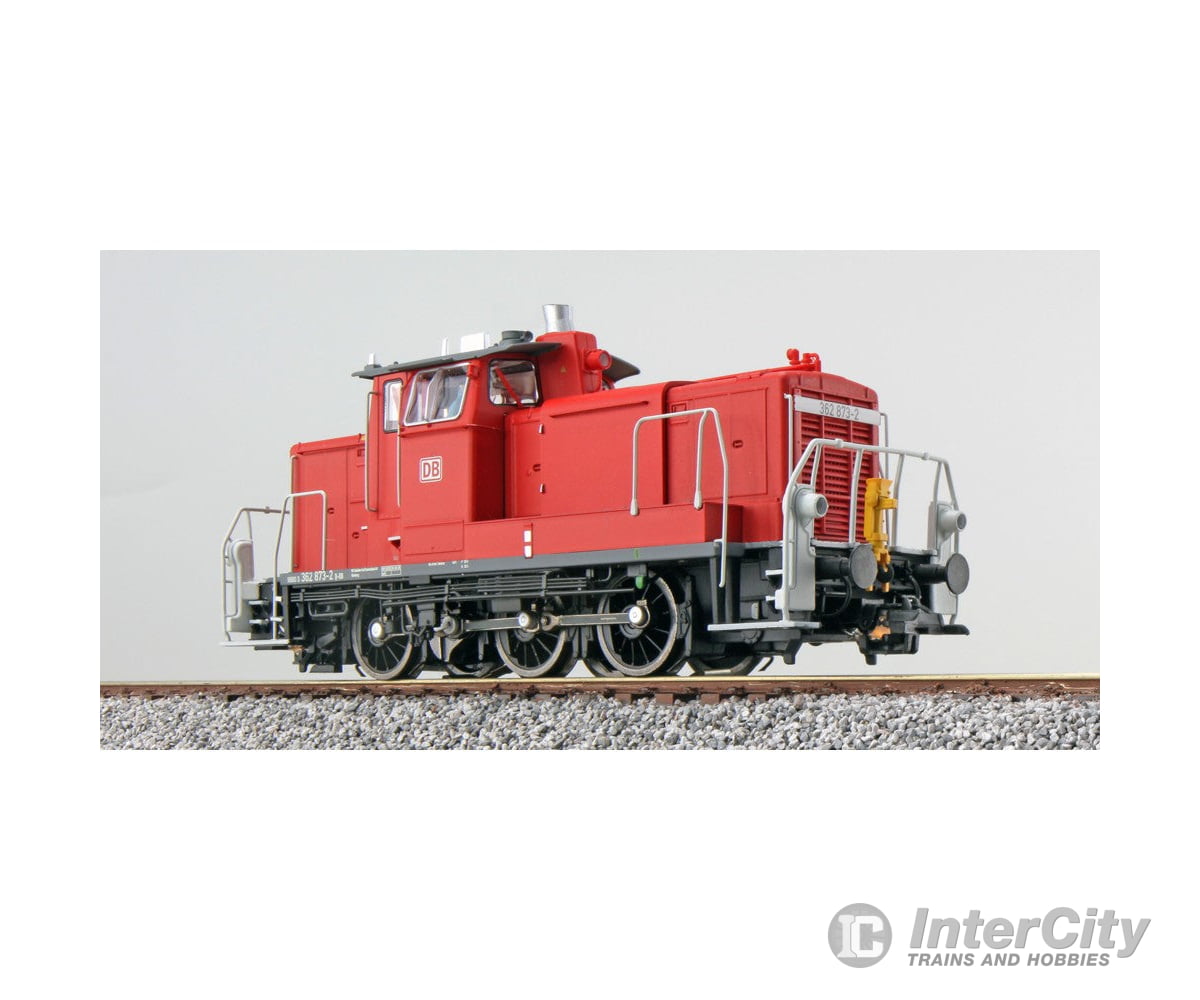Description
The DB-V60 is completely new as an ESU model! Chassis, body, engine, transmission, grinder including receptacle, smoke unit, lighting, digital clutch, loudspeakers and all details have been newly developed. The lamp inserts have vertical engravings to match the impression of DB unit lanterns.
The conversion from AC (factory state) to DC operation is carried out by disconnecting the center grinder and switching a small slide switch directly in front of the front axle.
The digitally remote-controlled, electromagnetic coupling sits in a standard shaft, is height-adjustable in two stages and can be easily replaced or replaced by any clutch if necessary thanks to the plug without soldering.
The newly designed smoke generator produces a greater steam output.
The LokSound 5 decoder is completely new. Silky driving characteristics and a number of useful functions and adjustment options inspire the operating track. There is a "heavy train" function, in which acceleration and braking times double and the engine works acoustically at a higher speed. With the " locomotive brake", the locomotive goes idling and brakes a little more strongly - if necessary to a standstill - regardless of the speed controller position. In shunting operation, the locomotive accelerates and delays more than in normal operation.
- LokSound decoder for DCC with RailComPlus®, Motorola®, M4 and Selectrix
- Independent registration at central centers with RailComPlus® or mfx® functionality
- Universal electronics with plug-in grinder
- Newly developed load-dependent smoke generator synchronous to the LokSound
- Double speaker with large sound capsule
- 31 special functions
- PowerPack storage capacitor for uninterrupted power supply
- Bell anchor motor with flywheel
- Digital remote-controlled coupling in NEM shaft
- True to model top lighting, cabin and driver's desk lighting
- Chassis lighting
- Engraved light guides
- Metal structure and frame
- Open-through fan grille in the long stem
- Robust yet filigree handles made of metal and plastic
- Multicolored driver's cab with train driver figure
- Length over buffer = 121 mm
In the 1950s, the Deutsche Bundesbahn DB planned to procure a large number of three-axheave shunting locomotives in order to modernize the displacement service. A drive with coupling rods and blind shaft was chosen. With a maximum speed of 60 km/h in the track aisle, the locomotive was just as fast as the usual freight trains at the time, and took advantage of the permissible speed on secondary routes. The coal-fired warming oven (Dofa oven) was only used to keep the parked V60 warm. From the 1990s, DB replaced the furnaces with external-powered warming devices, which eliminated the furnaces at the front end below the right-hand circuit. Other external changes were the installation of industrial magnets from the mid-1960s and from 1985 the equipment of the majority of locomotives with automatic couplings. DB-internal, the series machines are divided into light and heavy locomotives. Externally, both types do not differ. The 54 t heavy version weighs has a more sized frame than the light locomotives weighing only 48 t. With the introduction of computer-compatible designations in 1968, the light locomotives received the series number 260, the heavy ones were listed as 261. Until the early 1980s, the locomotives of both series had to be occupied by personnel trained as train drivers. Through a re-registration of the locomotives into the 360 and 361 series carried out in 1987, the DB assigned the machines to the small locomotives and created the professional title locomotive-Rangier-Driver for the shunting drivers trained as locomotive personnel. The machines equipped with automatic coupling (AK) and radio remote control received the designation 364 (light design) and 365 (heavy design). The BR 362 and 363 were only built from 1992 and refer to locomotives that were equipped with the Caterpillar engine 3412 DI-TA instead of the original Maybach GTO 6 / GTO 6A.


